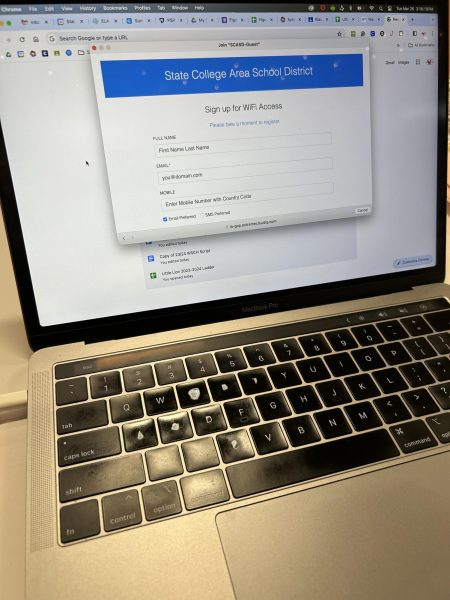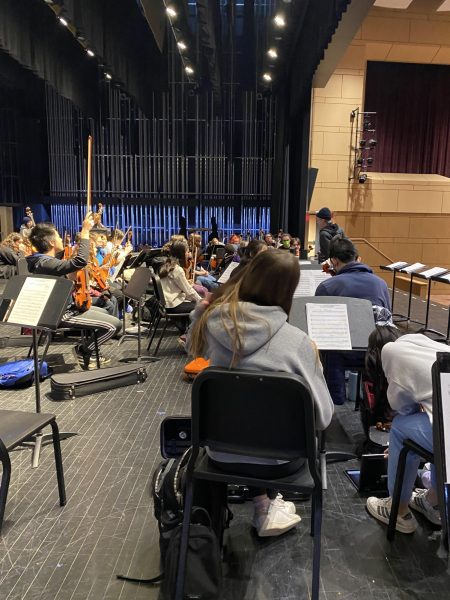Students Encouraged to Stand for U.S. Pledge of Allegiance
State High students standing for the U.S. Pledge of Allegiance in the morning.
January 26, 2023
Standing for the U.S. “Pledge of Allegiance” is a daily practice in most schools across the country, including State High. However, implementing this practice into students’ daily lives could be having a negative impact. While students do not technically have to stand for the pledge, there is a lot of stigma surrounding not standing for the pledge due to the heavy encouragement of it.
Eliminating the daily ritual of standing for the pledge in the morning would prevent students from other countries from feeling outcasted and unwelcome. For these students, it could be difficult to recite a pledge committing themselves to a country other than their home country every day.
Freshman Dalia Eldawody moved to the United States from Egypt right before she entered the sixth grade.
“I kind of just felt pressured into saying it, since I was new, I just didn’t want to stand out. I didn’t know that I didn’t have to do it,” Eldawody said, “Since the U.S. isn’t my home country, having to stand up for a new flag, it’s just not something I wanted to do.”
Not only does this daily practice exclude those who do not wish to stand for another country’s flag, but also those who do not follow a monotheistic religion. The original pledge was written in 1892. The last alteration of the pledge was in 1954, when the words “under God” were added to differentiate American society from “atheistic communism” during the Cold War.
Freshmen Ainsley Martin stands for the flag but disagrees with the concept of it in schools altogether.
“I don’t get the point because some things I don’t agree with, like the words “under God”, which could be exclusionary to people who don’t follow a religion, so I don’t say the pledge I just stand up,” Martin said.
Even though students are not required to stand for the pledge, it is not uncommon for students to face backlash or ridicule from their peers for not standing for the pledge. There will still be a social norm surrounding standing and reciting the pledge of allegiance, for as long as it stays in schools.
“I have heard other students making fun of those who don’t stand for the pledge because they think they should just stand for it and that it’s not a big deal,” Eldawody said.
Standing for the “Pledge of Allegiance” does not benefit anyone either. This shows that there is no reason to continue keeping the pledge in schools after all of its other consequences. The majority of the students that stand for the pledge in the morning are not aware of the history, or care. A lot of the time they do it because of the societal pressure put on the.
Roman Corl, a junior at State High, sometimes stands for the pledge of allegiance.
“Everybody’s just taught it in elementary school, so I’ve kind of always just done it since,” Corl said.
Overall encouraging students to stand for the Pledge of Allegiance every morning does more harm than good. If we were to remove this daily expectation of standing for the pledge of allegiance from schools it could promote inclusivity and eliminate the negative consequences that come with it.












